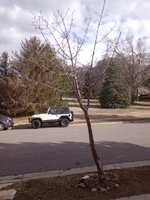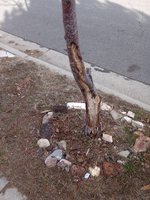doc spring _work
Shohin
Had a strange thought and I'm not certain it would work or even look good... But has anyone grafted a regular cherry branch onto a weeping cherry beyond where the tree begins weeping?
I imagine it would turn back around and grow up towards the light again, but could the weeping branch hold as the regular cherry grows larger?
Can it heal... And will it look wrong or interesting...
Has anyone tried this? I can't seem to find anything on it, I know regular cherrys are used for rootstock on weeping cherries and so sometimes the pop out of the top of the canopy but I couldn't find anything that looks like what is proposed... Or warnings against trying it
I imagine it would turn back around and grow up towards the light again, but could the weeping branch hold as the regular cherry grows larger?
Can it heal... And will it look wrong or interesting...
Has anyone tried this? I can't seem to find anything on it, I know regular cherrys are used for rootstock on weeping cherries and so sometimes the pop out of the top of the canopy but I couldn't find anything that looks like what is proposed... Or warnings against trying it



